Tom Cruise, Miles Teller, and more talk us through the making-of Top Gun: Maverick
Thirty-six years after the original took flight, Top Gun: Maverick gave us that lovin' feeling once again. Tom Cruise and his cast and crew talk Total Film through the making of the record-breaking sequel
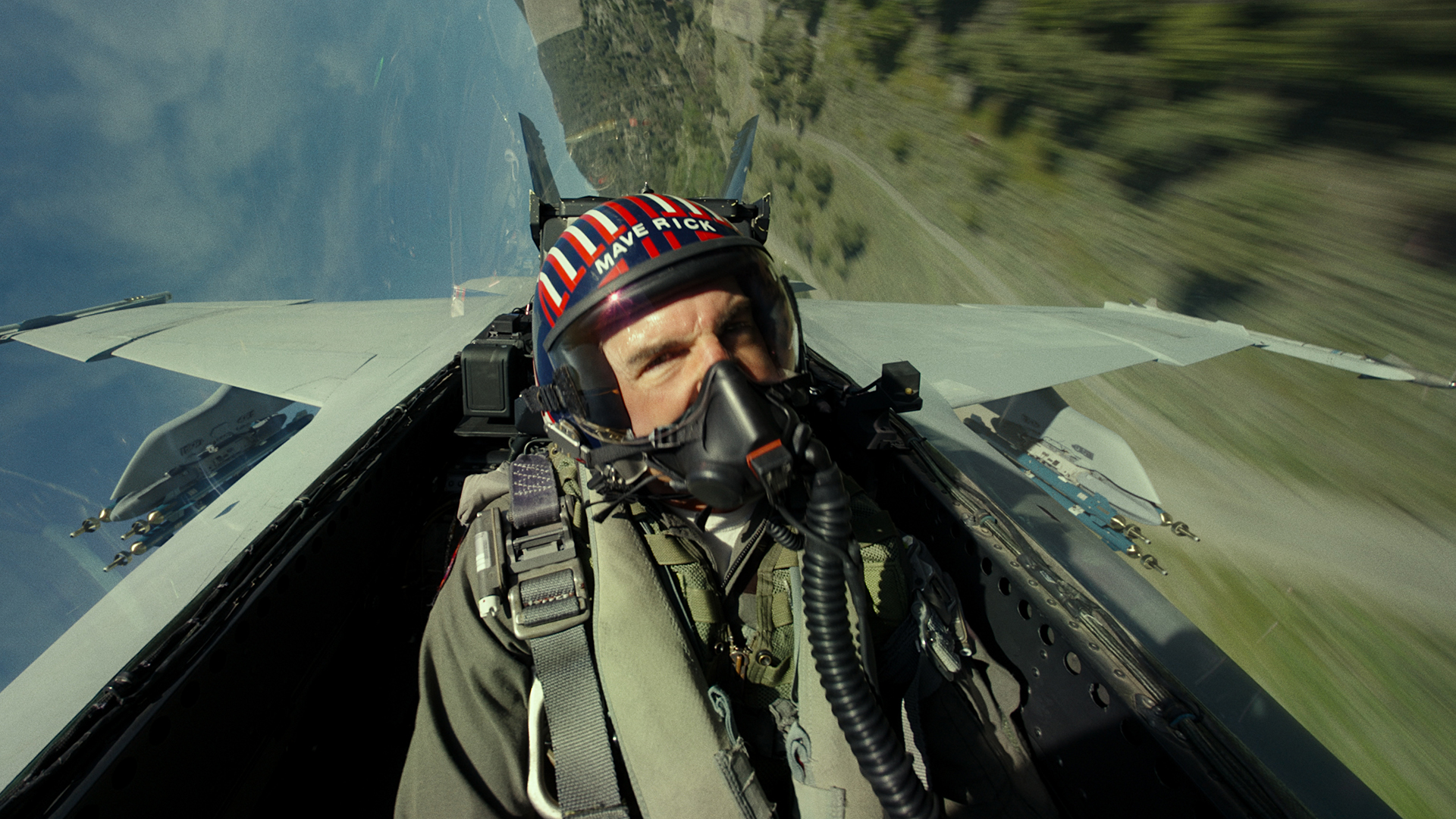
This Top Gun: Maverick article first appeared in the April 2022 issue of Total Film magazine. You can purchase a hard copy here or subscribe to the magazine and never miss another world-exclusive feature.
For a sequel to a film built around the need for speed, Top Gun: Maverick has been a long time coming. Recent additional delays caused by the pandemic mean that this sequel is finally touching down 36 years (almost to the date) after the original. That’s a long wait for fans who’ve been clamouring for more since Tony Scott’s fighter-pilot drama took their breath away in 1986. But, Maverick, true to his call sign, has never played by the rules.
“Originally, I wasn’t interested in doing a sequel,” star and producer Tom Cruise tells Total Film, speaking from South Africa where he’s readying his next Mission: Impossible (a franchise for which he’s managed five sequels and counting since 1996). Top Gun was the highest-grossing film of 1986, and confirmed Cruise’s movie-star status, but despite the demand, he was hesitant. “All over the whole world, people were asking for it, and asking for it. [Producers Don] Simpson and [Jerry] Bruckheimer – I remember back in ’87, they had an idea. It was the germ of the idea, actually, that ended up with the concept of [Top Gun: Maverick].”
That kernel was the relationship between Pete ‘Maverick’ Mitchell and Bradley ‘Rooster’ Bradshaw, the son of Mav’s former Radar Intercept Officer, Nick Bradshaw (Anthony Edwards), better known as Goose. Goose died in the first film during an ejection gone wrong, sending Maverick into a guilt-ridden crisis. But, explains Cruise, “Just through time, the story was never right. I don’t do things just to do it.”
Cruise was also waiting for the technology to reach a certain point to enable him to bring the audience into the cockpit, “to put the audience inside that F/A-18”.
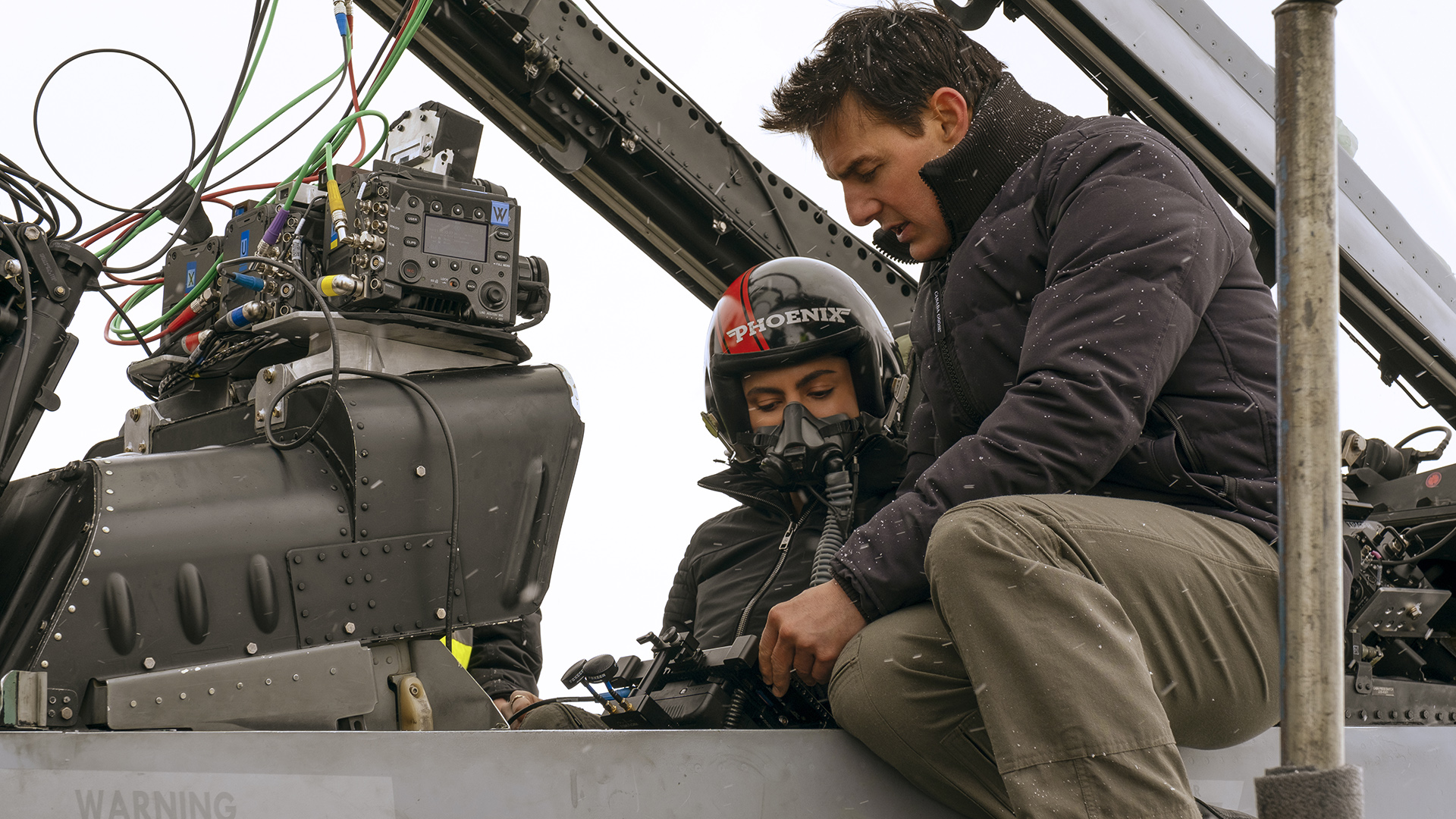
The sequel idea never really went away. “I had lots of discussions for years with Tony, with Jerry, with McQ [Christopher McQuarrie] about it, and when I was doing Oblivion, talking to Joe [Kosinski, director],” continues Cruise. “I just had to wait for that right moment. And I realised it was either going to be now or never. And basically, I liked the concept of the idea. And I was like, ‘Alright...’”
“We certainly played around with it,” says producer Bruckheimer of the decades-long development process. “But we never solved the problem of how to make another film.” Things kicked up a notch when Bruckheimer and Cruise met with Joseph Kosinski in Paris, during the shooting of Mission: Impossible – Fallout. “Joe had an idea for the movie,” explains Bruckheimer matter-of-factly. “And Tom loved the idea. And we loved it. So that’s where it all started.”
Bringing all the latest movie news, features, and reviews to your inbox
Joseph Kosinski (Tron: Legacy, Only The Brave) was perhaps fated to direct Top Gun: Maverick; the crew t-shirts on his first Cruise collaboration, Oblivion, featured a spin on the Top Gun logo. “It definitely must have been in the back of the mind,” smiles Kosinski.
Another frequent Cruise collaborator on TG:M is Christopher McQuarrie. The pair have worked together since Valkyrie, with McQuarrie most recently serving as writer/director on the two previous Missions (and the next two). “My earliest meeting on the project was in 2011 with Tom Cruise, Jerry Bruckheimer, [producer] David Ellison and the wonderful Tony Scott,” McQuarrie says.
“By 2011 there were a lot of fun ideas in search of a story, but something was still missing,” McQuarrie continues. “Being in a room with three of the guys who created the original film, I chose to assume the observer role for much of the meeting, focusing on the feeling I had watching Top Gun as a 17-year-old kid. All the while I was asking myself, ‘Why do we love Top Gun so much? Why has it lasted so long? Sure, there’s ‘Danger Zone’, ‘Lovin’ Feeling’, ‘Take My Breath Away’, motorbikes and volleyball, Mav and Goose, Mav and Charlie, Mav and Iceman – forget those things. They’ve all long since been copied and never to greater effect. Why does Top Gun really work? What is its essence?’ And with 25 years of perspective, the formula – the secret ingredient – hit me in that meeting. Without some contemporary version of it, I believed, a sequel could never work as well. Tragically, we lost Tony shortly thereafter and the sequel to Top Gun was in limbo.”
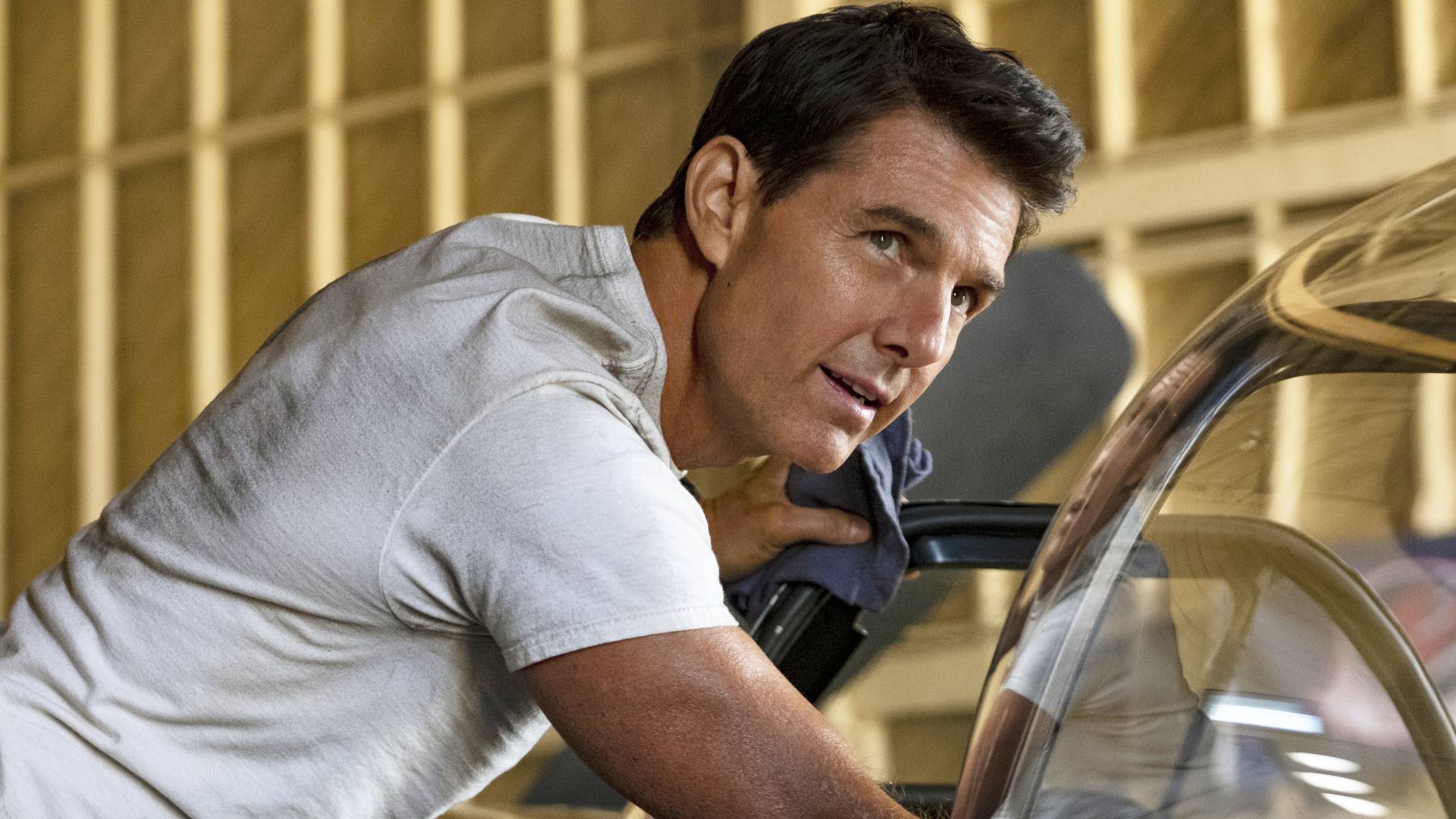
Six years later, Mission: Impossible – Fallout was being filmed in Paris when Top Gun: Maverick talks were heating up again, but McQuarrie was too busy on the former to get involved with the latter. Jump to a year later. “With Fallout in the can and about a month before Top Gun: Maverick was due to start shooting, Tom asked me to read the script,” explains McQuarrie. “And while I was rewriting a particular scene in my head, I had an epiphany. I knew how to contemporise that secret ingredient now. I pitched it to Tom and was immediately brought on to do a two-week rewrite. I stayed with the movie for the next two years.”
For those who remember seeing Top Gun in 1986 or since, its pleasures always seemed remarkably simple: high-speed, endlessly cinematic military tech piloted by effortlessly cool, instantly iconic characters. But it proved remarkably difficult to bring into the present day, particularly as the team were resisting a straightforward carbon copy. “I didn’t want to do a cover of the original,” explains Cruise. “I’m not doing a cover of a song. I was always looking at tone.”
“The first film was a rite-of-passage story, and I knew that this one had to be the same,” Kosinski tells Total Film. “There had to be some sort of emotional journey for Maverick to go through.” That’s quite a challenge, when Maverick needs to be recognisable to the audience who grew up rooting for him, while still having believably aged up in this world. “He still has to be Maverick,” asserts Cruise. “I want the same quality, the same emotional tone that we had in 1986. How do we do that in the modern day? He’s still got to be Maverick. But also, you know, he’s not in his twenties.”
“I had a very kind of distinct idea of where Maverick is at the beginning of this film,” says Kosinski. “It’s a guy who’s in his fifties now. Where would a guy like Maverick end up in the Navy?”
“It was very important to Tom that Maverick still be Maverick from frame one,” says McQuarrie. “We didn’t want a movie that started with some sad guy who used to be Maverick and finds out how to be Maverick again. That trope might give him a mountain to climb, but it also crushes the spirit of the original film. With all that’s gone on in the world since, there was something uplifting in the notion of Mav still out there being Mav. And that presented the challenge: How to retain his youthful spirit without making him the boy who never grew up? How has he grown, yet still has some growing to do? It’s a very delicate balance.”
Like father, like son
When we pick up with Mav in Top Gun: Maverick, he’s still taking to the skies as a test pilot, having avoided the promotions that would chain him to a desk. A highly specialised mission requires him to train a detachment of graduates from Top Gun (the United States Navy’s Fighter Weapons School, to give it its more formal name). So we’re talking the best of the best of the best young Naval Aviators. Of course, among their number is Rooster.
Kosinski had previously worked with Miles Teller on Only The Brave, and had been struck by his likeness to a young Anthony Edwards (so much so that he took a photo of Teller along to his first TG:M meeting). “I knew Miles is just a tremendous dramatic actor in that age group, and I knew that he had the chops to be able to pull off the role and carry a scene off with Tom,” says Kosinski. “That’s a pretty tall assignment.
“So he was definitely in my mind from the beginning. But we still went through your traditional casting process of throwing the net very wide. Miles, through that process, came out on top.”
“We were talking about what that relationship is, and what it is to be Rooster’s son,” adds Cruise. “And he created it. He came in with the moustache. The subtlety and the nuance that he brought... I thought, ‘Boy, I feel like, at times, I’m seeing both of his parents.’” (In the ’86 film, Goose Jr.’s parents were played by Edwards and Meg Ryan.)
In an echo of Maverick’s plight in the first film, the death of Rooster’s father looms large in his mind. “If anybody loses a parent at a very young age, even if it’s kind of before their memory starts, that’s going to affect them,” says Teller, adding that, between Maverick and Rooster, “there’s some stuff there that they’ve got to work out.”

Another new character with links to Maverick’s past is Jennifer Connelly’s Penny, a single mother who runs the bar where the graduates hang out. “They have a history together,” Connelly tells TF. “They’ve sort of come in and out of each other’s lives over the years. It’s not by accident that they keep finding themselves next to each other. They have some character attributes in common, I think.”
While the role didn’t require Connelly to get in a Superhornet, she did still get to take to the air with Cruise. “I was, in one scene, in a P-51 that Tom piloted,” she says, referring to Cruise’s own vintage WW2 plane. “That was pretty extraordinary. He is actually a licensed aerobatic pilot, which I didn’t know about him before. I don’t think I’d even taken the time to think about the fact that there are aerobatic pilots, to tell you the truth! It’s not something that had ever crossed my radar.”
Another new character who’s the antithesis of Maverick is Jon Hamm’s Cyclone, a Vice Admiral with the Navy. “I’m kind of the voice of authority, so I’m a little bit of the guy who is the example of what Maverick could have been, and should have been, had he played by the rules, and followed it all to a tee,” explains Hamm. “But Maverick doesn’t do that, as we know. Maverick is a guy who just has to fly, man.”
Hamm came to the film with his own nostalgic memories of the original. “I would have been 14 or 15 years old [when it opened],” he says. “I was dialled pretty tightly into the centre of the bullseye of that demographic. It was a pretty big part of my teenage male existence. It didn’t make me want to run and join the Navy, but it did make me kind of want to do the next best thing, which was to become an actor!”
Although this is a new story, of course, fans can expect some Easter eggs and callbacks throughout. Kelly McGillis’ Charlie doesn’t return (“That’s left back in the first one,” says Bruckheimer), but Val Kilmer will reprise his role as Tom ‘Iceman’ Kazansky in some capacity, though details are under wraps. “That was a huge, huge get – having Val come back to play Iceman,” beams Kosinski. “To get to work with an actor of that calibre, to see the chemistry, the camaraderie between him and Tom, and to have those two characters reunite in this film, was a really special moment, and one of my favourite parts of the film.”
Flight club

Another element of the original film that endures is the fact that the external threat remains anonymous, to better focus on the competition and companionship within the Top Gun program. There’s rivalry, sure, but teamwork and affection too. The sequel takes the same approach, Bruckheimer confirms. “There’s really no designated enemy, just like the first one.”
Assembling a cast of young graduates who could live up to the first film, and handle the physical demands of this film, was a tall order. “I like to work with people that are really passionate about working,” says Cruise. “Look, I work hard, so I expect people that work with me to know, ‘You better enjoy this. You better be in it for the right reasons, because that’s what it’s about.’ It’s real work, man. And you’ve got to really enjoy it. I’m constantly learning and pushing myself and everyone around to contribute to the film. Each one of these guys is very charismatic, very talented, and very distinct and interesting onscreen.”
At the best of times, you don’t want a cast whose egos are writing cheques their bodies can’t cash, but it was essential for Top Gun: Maverick, with its commitment to shoot the actors practically, inside the Boeing F/A-18 Superhornet jets.
“We were all mini Toms making this movie,” says Teller. “He put us through... I’ll just call it a ‘Tom Cruise boot camp’. We were getting in killer shape. And also for the stunts and stuff that Tom does in movies, it’s usually a very specific type of training. You’re not just going into the gym and lifting some weights. We did flight training for three months before we started filming... We got put through the wringer.”

The sheer amount of time the cast spent in the skies marks a significant shift from Cruise’s experience on the first film. Ahead of shooting the original, he stipulated that he’d be filmed in a Grumman F-14 Tomcat jet. “When I first committed to the first Top Gun, I did it based on the fact that I’d be filmed in the F-14, and I’d get to fly in the F-14,” he says. “I wanted to give the audience that experience of what it’s like being a fighter pilot, and what that world is like, and the culture of it.”
But the actual time up in the air was limited, and the footage of the largely unprepared actors not that useful. “On the first movie, we put all the actors in an F-14, and we couldn’t use a frame of it, except for some stuff on Tom – that was it,” recalls Bruckheimer. “Their eyes were rolling back into their heads. They were throwing up. So Tom remembered that, and since he’s an avid pilot, he said, ‘We’ve got to train them to be able to handle the g-forces.’”
“I developed a whole programme for the actors, and how we could get them in the [F/A-18s],” says Cruise. “It was every step of the way. I had to teach them how to fly. I had to teach them how to handle gs. I had to get them confident in the aeroplane.”
The regime cemented the graduates off-screen relationship in a way comparable to their onscreen dynamic “Because we went through such a traumatic experience together with learning how to fly aircraft and going through the rigorous programme that Tom Cruise put together, it was something that we had to bond on,” says Greg Tarzan Davis, who plays graduate Coyote.
“Maverick is pushing them to their limits [in the film],” adds Jay Ellis, who plays Payback. “I think it ultimately makes them bond in a way that makes them stronger, and more in sync with each other.”
“When I got the audition, I was actually afraid of flying,” explains Danny Ramirez, aka Fanboy. “I couldn’t have imagined myself truly flying, more than once a day, a commercial plane, let alone an F/A-18. But I knew the opportunity was too big to pass upon. I had to sign a paper saying I wasn’t afraid of flying. I was like, ‘This is way too big to say no. So I’ll sign it anyway, and I’ll figure it out as it goes.’”
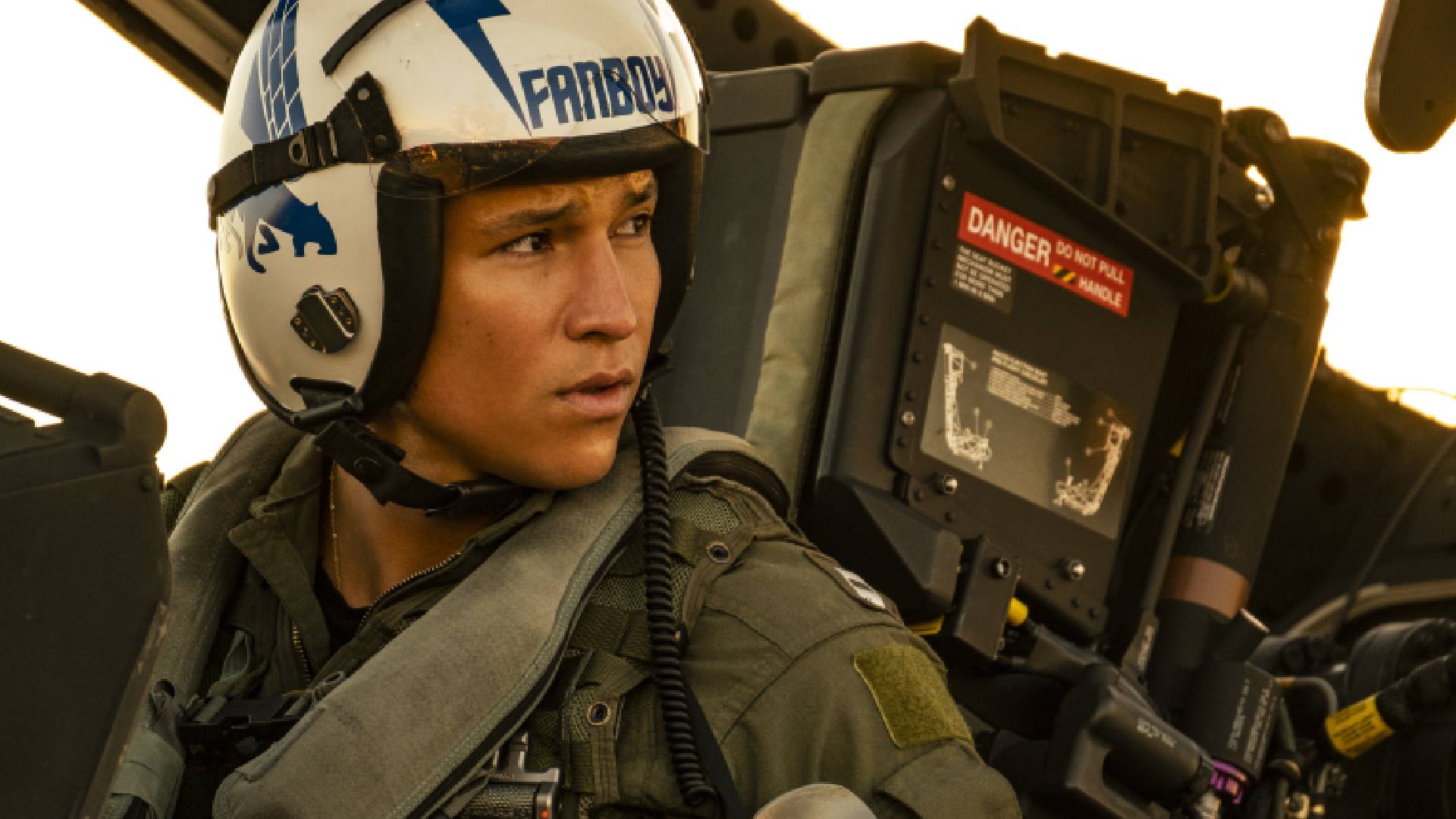
Lewis Pullman - who portrays graduate Bob - struggled to hold his stomach. “This was one of the hardest things I’ve ever had to do,” he laughs. “There are certain points in the training where I was like, ‘Shit, I can’t do this. Maybe I’m born different. I can’t pull this many gs.’ I probably puked a jacuzzi’s worth of puke during this whole process. It was so gross.”
Glen Powell (Everybody Wants Some!!) has the pivotal graduate role of Hangman - after narrowly missing out on playing Rooster. Having so impressed in the audition, this part was developed for him. “I think the thing that I’m really grateful about this movie is, I got to truly do ‘Tom Cruise film school’, which is something that very few people ever have the opportunity to do, to really get inside his brain – which is so fun. He’s just so excited about movies, and the potential of movies, and he celebrates when any department head or any performance does something great.”
Monica Barbaro is Phoenix, a woman in the testosterone-heavy mix. “She is incredibly tough and courageous,” Barbaro says. “The thing in the first movie is, they’re trying to weed out who’s the best of the best. But the thing about this group is, they are that. They’re already beyond that. They’ve literally graduated from the program... These are all the best of their classes getting together.”
It was important for everyone that Phoenix represent the excellence of women in the Navy. “The production and Tom and Joe and the Navy, as well, were very adamant about making sure that she is a well-rounded and really incredible individual, because that is representative of the women I met who are pilots,” she says. “So I was lucky in that sense that everyone wanted to take very good care of the Phoenix character.”

The actors didn’t have to merely survive the immense g-forces when they took to the skies in the F/A-18s. Given that they were each sharing a craft with a real Navy aviator, there’s not really room in the cockpit for a cinematographer, hair and make-up, or any of the other departments you might find on a soundstage. “We had to teach them about editing, and what kind of performance [to deliver],” says Cruise. “And lighting. Because they’re up there, turning their cameras on and off. And I also taught the Top Gun pilots how to do that.”
“Before every flight, I would sit there, in a little tent, with a mock-up of the Superhornet cockpit, and we would go through every scene, every eyeline, where the sun is,” explains Kosinski. “The Navy pilot flying the plane would have to be intimately choreographed with every scene as well.” A wooden replica cockpit was built on the ground so that the actors and pilots could hone the details before taking to the skies.
“And once they landed, we would bring the tapes straight into a screening room, and we would watch all the takes with them, directly, and give them notes and adjustments, and maybe send them up again in the afternoon,” continues Kosinski. “It was a very slow, laborious process that resulted in just maybe minutes of footage each day.”
Even for an experienced aviator like Cruise, the g-forces experienced in an F/A-18 are extremely physically intense. “There’s a lot going on in that jet,” says Cruise. “It’s very intense. The adrenaline is always flowing. It’s always flowing. You prep, and you prep, and you prep. And then you go and do it. You’re always surprised about what you did get.”
The cast and filmmakers have nothing but respect for the members of the Navy they worked closely with throughout. “They couldn’t have been more professional and terrific to work with,” says Bruckheimer. “We were very, very blessed that we had such a good relationship with the Navy.”
It seems the respect between the cast and Navy was reciprocated. Ramirez remembers his first F/A-18 flight with his Navy pilot. “Once we’d landed, he told everyone, ‘Oh my God, you guys really trained for this, because I was trying to make Danny pass out back there, and I’d just hear over the headset this cheery voice,’” laughs Ramirez. “I think, at that point, after the first flight, we gained a little respect.”
Pitch perfect

When you have access to those magnificent flying machines, you need to capture them appropriately. That’s another way in which the bar has been raised considerably since the shooting of the ’86 film, when it was only possible to have one bulky camera capturing the actors in-flight.
“I’d been working with Sony on a prototype of a new camera that gives an IMAX quality image, but does it in a very, very small form factor,” explains Kosinski. “I worked very closely with my cinematographer, Claudio Miranda, who’s very, very smart about these sorts of things, and we worked very closely with the Navy over the course of a year to get six 6K cameras in the cockpit. And then we had two to four mounted on the outside of the planes as well, and ground units that were also shooting ground-to-air. There was, I think, one day on set when we had 24 cameras rolling, which is a lot.
“We actually mounted one of these cameras on the nose of another fighter jet. It’s called an L-39. It’s a smaller, very manoeuvrable jet. That allowed us to keep up with – or almost keep up with – these military jets, and get that kind of air-to-air coverage that normally you would not be able to get, just because they’re too fast.”
The results are – as anyone who’s glimpsed any footage attests – spectacular. “I was there when editor Eddie Hamilton presented the first assembly of some of the footage,” says McQuarrie. “Keep in mind, I was fresh from directing a helicopter sequence in Mission: Impossible at this point and understood the challenges and limitations of an aerial sequence intimately. I was also going to be pretty hard to impress. When the presentation was over, I turned to Joe Kosinski and dropped a few choice expletives on behalf of everyone who worked on Fallout, which he understood to be the highest possible praise. You won’t see the likes of this movie done practically ever again. Ever.” Hamm succinctly describes the 6K footage as “the H-est of HD... The clarity of it is going to be bonkers.”
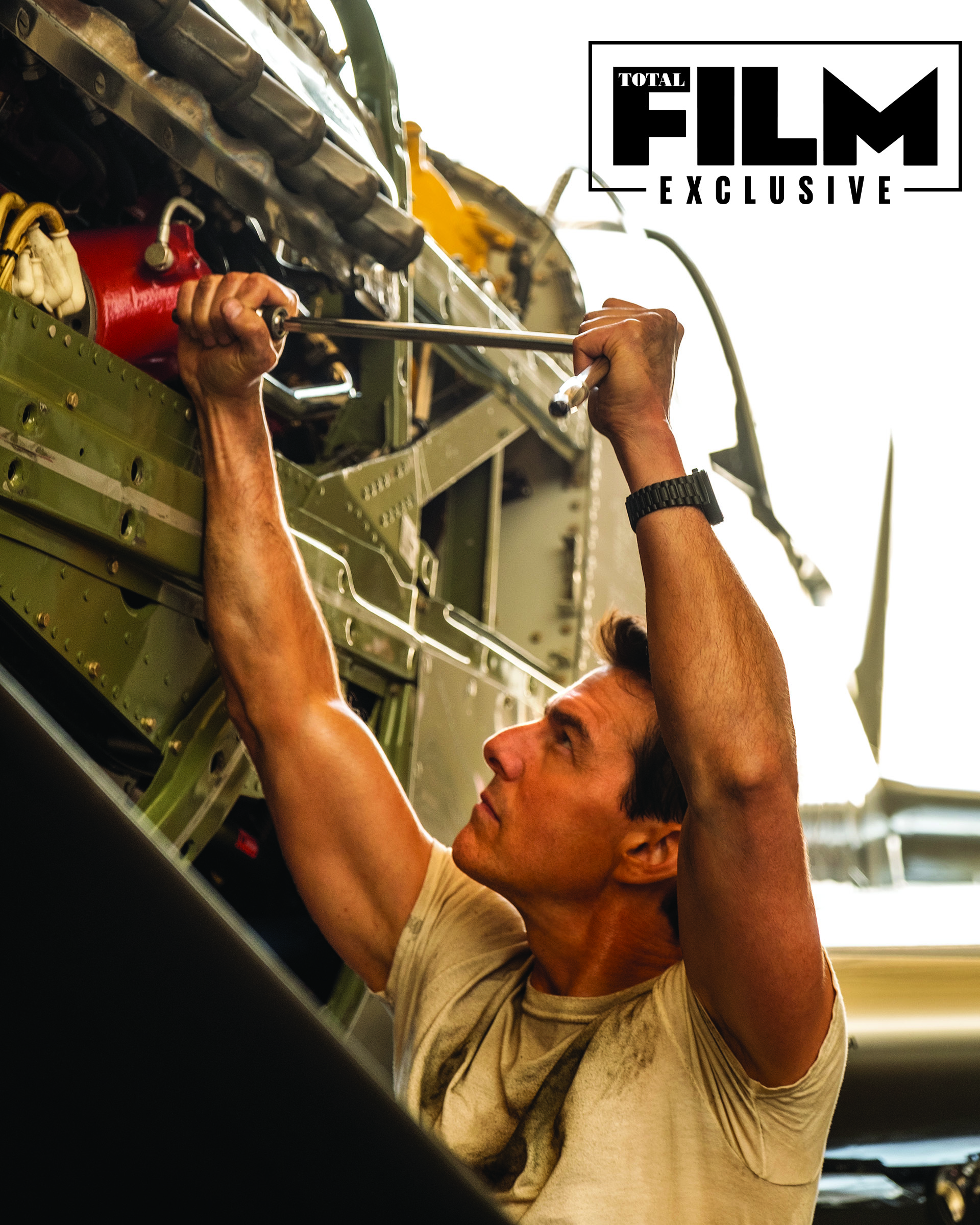
While the wait for the film has been long and protracted (extended by those Covid delays which proved another big hurdle to overcome), Kosinski sees TG:M existing in its own space and time. “I kind of approached it like it is its own cinematic universe,” he says. “In the world of Top Gun, the sun is always just about to set. It has a tone, a look, a feel. It’s iconic. We all wanted to make sure that we respect the past and where this came from, but at the [same] time we’re telling a new story about this next phase in Maverick’s life. It was always about the balance of the old and the new. That’s why I’m not too concerned about this movie coming out now, because I do feel like it doesn’t matter if it had been 2020 or 2022 – the movie kind of has a timeless quality to it.”
For Cruise, the whole endeavour has been built around giving the audience a big-screen experience that’s becoming a rarity today. “It was really looking for that whole team, of all of us reaching for the same thing, to entertain the audience, and to capture something that is cinematic and unique,” he says. “I wanted to capture something where the audience leaves, and they just feel good. I want them to walk away, and be like, ‘Aw, yeah! I want to fly an F/A-18! I want to play on the beach! I want to live!’”
He erupts into an infectious laugh. “This is what I want them to feel! Come on, guys. It’s summer! And especially after everything everyone’s been through, it’s even more so. I want people to dress up, and go and have a blast. We’re going to take you through it. It’s going to be a rollercoaster. We’re going to take you up and down, but we’re going to give it to you.”
Top Gun: Maverick is out now in cinemas and on digital. For much more from Total Film, make sure to subscribe to the magazine and never miss another world-exclusive feature.
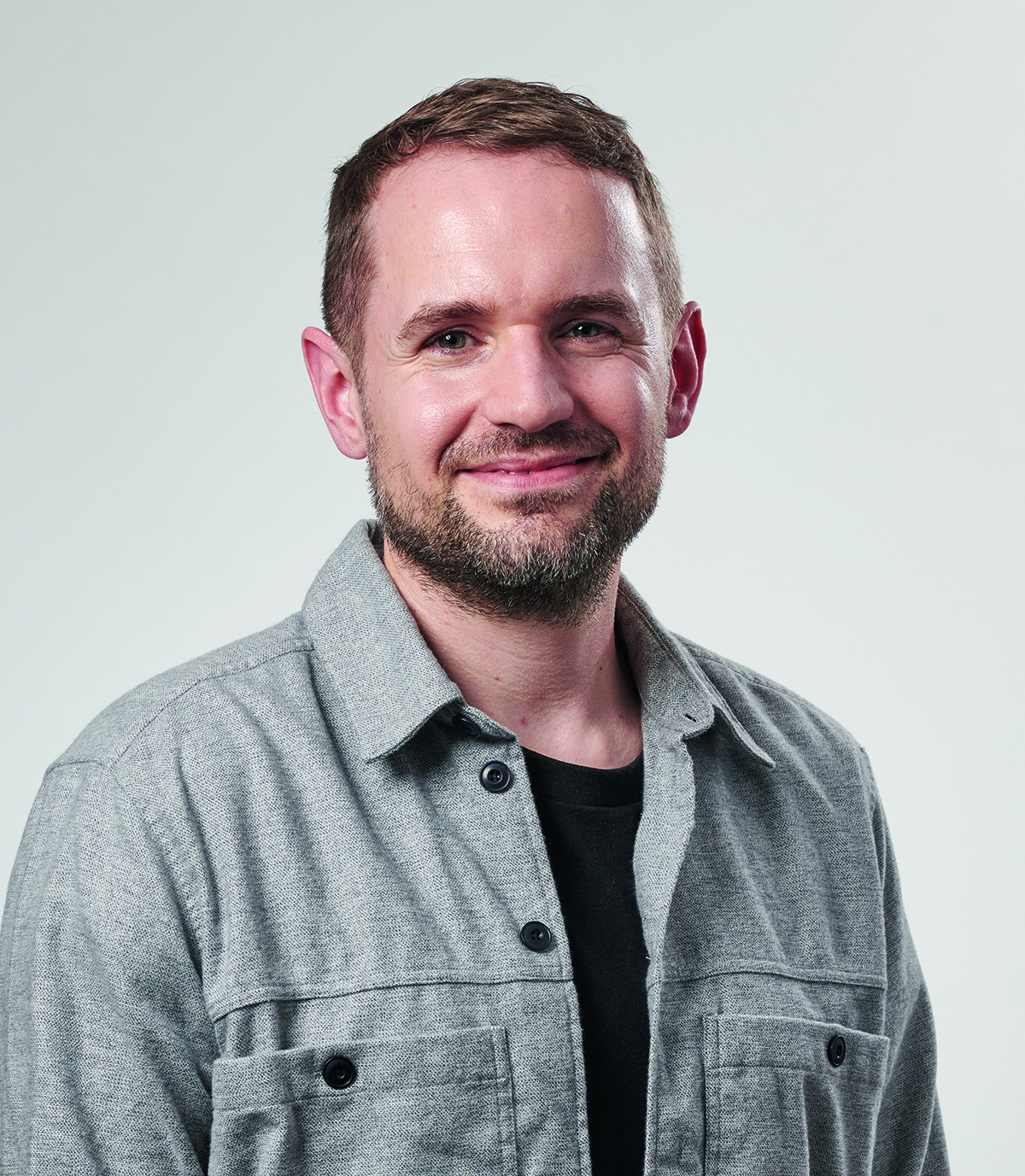
I'm the Editor at Total Film magazine, overseeing the running of the mag, and generally obsessing over all things Nolan, Kubrick and Pixar. Over the past decade I've worked in various roles for TF online and in print, including at GamesRadar+, and you can often hear me nattering on the Inside Total Film podcast. Bucket-list-ticking career highlights have included reporting from the set of Tenet and Avengers: Infinity War, as well as covering Comic-Con, TIFF and the Sundance Film Festival.


